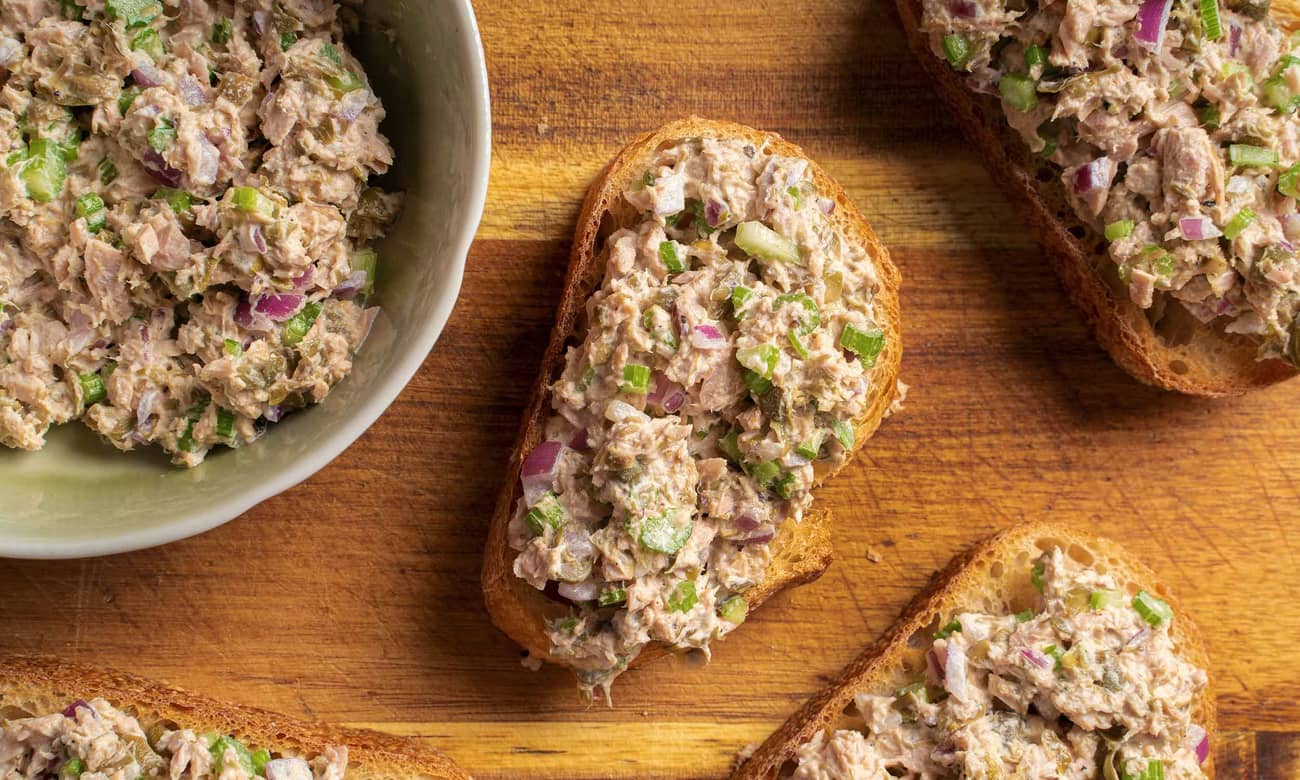One can of tuna goes a long way in this bibimbap, or Korean mixed rice bowl. We combine it with a host of colorful sides you might already have in stock—spinach, carrots, cucumber, mushrooms—to create a colorful, flavorful, (mostly) healthy rice bowl. When mixed together, the rice turns a bright red-orange from the spicy-sweet gochujang.
Both fresh and day-old, leftover rice will work here, since you'll need to heat it through with sesame oil in a pan. To mimic the crusty bottom / tutong from a dolsot, you can gently crisp up the rice in a lightly oiled skillet.
Bibimbap takes time to assemble, but pre-prepped vegetables make it a breeze.
A home cook in Korea will have a variety of namul, or vegetable side dishes, available in their fridge. They're often prepared in advance, varying from blanched or steamed to pickled or boiled. Some are seasoned with condiments like soy sauce or sesame oil.
If you're starting from scratch, get ready for a little bit of prep!
The easiest add-ons are thinly sliced, ready-to-eat vegetables seasoned with a bit of salt:
Spinach and bean sprouts add texture and extra nutrition. In a pot of salted boiling water, blanch your spinach until wilted, about 1 minute; blanch bean sprouts until tender-crisp, around 2–3 minutes. Season both with a bit of chopped garlic, soy sauce, and sesame oil.
Use stemmed and sliced fresh shiitake mushrooms. For beautifully browned mushrooms, sear them in an oiled skillet without moving—this can take 1 minute over medium-high, 3–5 over medium. After that, stir-fry using a wooden spatula until browned all over.
Got extra takeout from the night before? Have extra veggies or cooked proteins languishing in Tupperwares? Pile them on your bibimbap. This versatile dish excels in clearing out your fridge.
Make bibimbap sauce: Add gochujang, brown sugar, vinegar, sesame oil, and garlic powder in a small mixing bowl. Stir to combine. Add water, stirring again until you get a smooth sauce. Taste and season with salt as you like.
Prepare rice: Heat a pan over medium heat. Add rice, then drizzle sesame oil over the grains. Mix and toss until rice is evenly coated and heated through. Divide rice between two bowls.
Prepare bibimbap: Top each rice bowl with half of the tuna, spinach, muhsrooms, carrots, and cucumbers, arranging them along the sides of the bowl.
Cook eggs: Add oil to the same pan. Crack eggs into the pan, making sure they're spaced apart to cook separately (and not fuse into one giant egg). Cover and cook until whites are set and yolk is still runny, around 3 minutes. Using a spatula, carefully place the cooked eggs at the center of each bowl.
Finish and serve: Drizzle or spoon about 2 tbsp bibimbap sauce over each bowl, adding more to taste. Garnish with toasted sesame seeds. Serve immediately.

